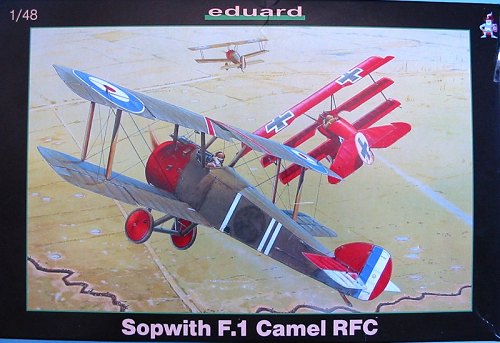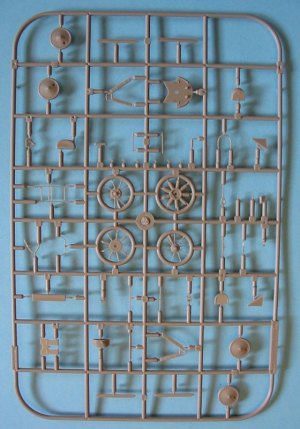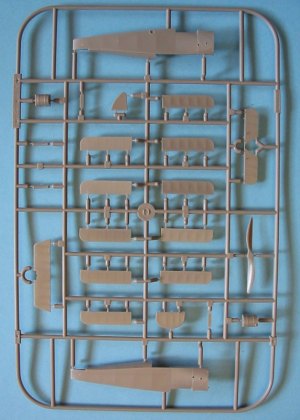
|
KIT: |
Eduard 1/48 Sopwith Camel |
|
KIT # |
? |
|
PRICE: |
$24.95 |
|
DECALS: |
4 options |
|
REVIEWER: |
|
|
NOTES: |

|
HISTORY |
The Sopwith Camel is deservedly one of the most famous aircraft of the First World War and was arguably the best British fighter to see action. It was terrifically maneuverable and able to "turn on a sixpence," particularly to the right, due to the gyroscopic forces generated by its powerful rotary engine. The Camel was feared by new pilots, due to the fact that until flying speed was reached it was prone to a vicious ground-loop if full left rudder was not held during the takeoff run.
|
THE KIT |
 |
 |
 |
Eduard announced development of a Camel series over two years ago, with an initial release to the market scheduled for December 2002. Last summer, the company discovered some mistakes in the kit design, and delayed release a year to correct the inaccuracies. (Wouldn't it be nice if a certain Chinese company would do such a thing?)
The wait has been worth it. The Eduard Sopwith Camel is the best mainstream injection-molded World War I model to ever be released.
 The kit comes
on four sprues of tan plastic, with a sprue of clear plastic for the wing
inspection windows, a photo-etch fret of the pre-painted Sutton harness,
and decal markings for four different Camels, including Donald McLaren,
the top-scoring Camel pilot on the Western Front. The Camel of Captain
A. Roy Brown, the man who didn't shoot down Manfred von Richtofen, is
also an option.
The kit comes
on four sprues of tan plastic, with a sprue of clear plastic for the wing
inspection windows, a photo-etch fret of the pre-painted Sutton harness,
and decal markings for four different Camels, including Donald McLaren,
the top-scoring Camel pilot on the Western Front. The Camel of Captain
A. Roy Brown, the man who didn't shoot down Manfred von Richtofen, is
also an option.
All control surfaces are separate. The wings and fair surfaces are the thinnest I have ever seen - which is perfect for a World War I airplane. The wing fabric detail is a little heavy, with prominent rib tapes along with the "hills and valleys" so many manufacturers seem to think is correct for a fabric-covered airplane. I wish they would all just take a look at the wings Blue Max does - which are dead-on accurate - and copy that. This, however, is my only complaint about this kit. The fabric detail extends to a representation of the real fabric look of the fuselage, with "dish-in" of the fabric between the structural members of the airframe.
|
CONCLUSIONS |
This Camel by Eduard is every inch a competitor with anything from Tamiya or Hasegawa for production design quality and production quality. It is a "slammer" if it is possible to use such a term to describe a World War I model.
If you would like your product reviewed fairly and quickly by a site that has over 200,000 visitors a month, please contact me or see other details in the Note to Contributors.